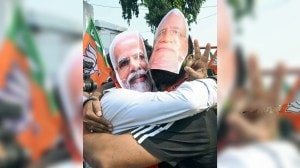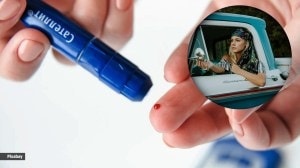Steve Jobs: A tech leader who stripped excess away until only elegance remained
He was the most passionate leader one could hope for,a motivating force without parallel.
Steven P Jobs,the visionary co-founder of Apple who died on Wednesday,was neither a hardware engineer nor a software programmer,nor did he think of himself as a manager. He considered himself a technology leader,choosing the best people possible,encouraging and prodding them,and making the final call on product design.
He was the most passionate leader one could hope for,a motivating force without parallel, wrote Steven Levy,author of the 1994 book Insanely Great,which chronicles the creation of the Macintosh. Tom Sawyer could have picked up tricks from Steve Jobs.
Jobs was the ultimate arbiter of Apple products,and his standards were exacting. Over the course of a year he tossed out two iPhone prototypes,for example,before approving the third.
To his understanding of technology he brought an immersion in popular culture. In his 20s,he dated Joan Baez; Ella Fitzgerald sang at his 30th birthday party. His worldview was shaped by the 60s counterculture in the San Francisco Bay Area,where he had grown up. When he graduated from high school in Cupertino in 1972,he said,the very strong scent of the 1960s was still there.
After dropping out of Reed College,a stronghold of liberal thought in Portland,in 1972,Jobs led a counter-cultural lifestyle himself. He told a reporter that taking LSD was one of the two or three most important things he had done in his life. He said there were things about him that people who had not tried psychedelics even people who knew him well,including his wife could never understand.
Decades later he flew around the world in his own corporate jet,but he maintained emotional ties to the period in which he grew up. He often felt like an outsider in the corporate world,he said.
Apples very name reflected his unconventionality. In an era when engineers tended to describe their machines with model numbers,he chose the name of a fruit,supposedly because of his dietary habits at the time.
Simplifier: At a time when hobbyist computers were boxy wooden affairs with metal chassis,Jobs designed the Apple II as a sleek,low-slung plastic package intended for the den or the kitchen. He was offering not just products but a digital lifestyle. He put much stock in the notion of taste, a word he used frequently. It was a sensibility that shone in products that looked like works of art and delighted users. Great products,he said,were a triumph of taste,of trying to expose yourself to the best things humans have done and then trying to bring those things into what you are doing.
Regis McKenna,a longtime Silicon Valley marketing executive,said Jobs genius lay in his ability to simplify complex,highly engineered products,to strip away the excess layers of business,design and innovation until only the simple,elegant reality remained.
Jobs own research and intuition,not focus groups,were his guide. When asked what market research went into the iPad,Jobs replied: None. Its not the consumers job to know what they want.
Early interests: Steven Paul Jobs was born in San Francisco on February 24,1955,and surrendered for adoption by his biological parents,Joanne Carole Schieble and Abdulfattah Jandali,a graduate student from Syria who became a political science professor. He was adopted by Paul and Clara Jobs. The elder Jobs,who worked in finance and real estate before returning to his original trade as a machinist,moved his family to Mountain View and then to Los Altos in the 1960s.
Jobs developed an early interest in electronics. As an eighth grader,after discovering that a crucial part was missing from a frequency counter he was assembling,he telephoned William Hewlett,the co-founder of Hewlett-Packard. Hewlett spoke with the boy for 20 minutes,prepared a bag of parts for him to pick up and offered him a job as a summer intern.
Jobs met Steve Wozniak while attending Homestead High School in Cupertino. The two took an introductory electronics class there. The spark that ignited their partnership was provided by Wozniaks mother. She sent Wozniak an article from the October 1971 issue of Esquire magazine. The article detailed an underground hobbyist culture of young men known as phone phreaks who were illicitly exploring the nations phone system.
Wozniak shared the article with Jobs,and the two set out to track down an elusive figure identified in the article as Captain Crunch. Captain Crunch was John Draper,a former Air Force electronics technician,and finding him took several weeks. Learning that the two young hobbyists were searching for him,Draper appeared one day in Wozniaks Berkeley dormitory room. Jobs,who was still in high school,had travelled to Berkeley for the meeting. When Draper arrived,he entered the room saying simply,It is I!
Based on information they gleaned from Draper,Wozniak and Jobs later collaborated on building and selling blue boxes,devices that were widely used for making free and illegal phone calls. They raised a total of $6,000 from the effort.
First steps: After enrolling at Reed College in 1972,Jobs left after one semester,but remained in Portland for another 18 months auditing classes. Leaving school,however,also freed his curiosity to follow his interests. He said in a speech at Stanford that much of what I stumbled into by following my curiosity and intuition turned out to be priceless later on.
He returned to Silicon Valley in 1974 and took a job there as a technician at Atari,the video game manufacturer. Still searching for his calling,he left after several months and travelled to India with a college friend. Jobs returned to Atari that autumn.
Apple: Wozniak designed the original Apple I computer simply to show it off to his friends at the Homebrew. It was Jobs who had the inspiration that it could be a commercial product.
In early 1976,he and Wozniak,using their own money,began Apple with an initial investment of $1,300; they later gained the backing of a former Intel executive,A C Markkula,who lent them $250,000. Wozniak would be the technical half and Jobs the marketing half of the original Apple I Computer. Starting out in the Jobs family garage in Los Altos,they moved the company to a small office in Cupertino shortly thereafter.
In April 1977,Jobs and Wozniak introduced Apple II at the West Coast Computer Faire in San Francisco. It created a sensation. By 1983 Apple was in the Fortune 500. No company had ever joined the list so quickly.
Jobs shifted his focus to a new and ultimately short-lived project,an office workstation computer code-named Lisa.
Apocalyptic moment: By then Jobs had made his much-chronicled 1979 visit to Xeroxs research center in Palo Alto,where he saw the Alto,an experimental personal computer system. The Alto,controlled by a mouse pointing device,was one of the first computers to employ a graphical video display,which presented the user with a view of documents and programs.
It was one of those sort of apocalyptic moments, Jobs said in a 1995 oral history interview for the Smithsonian Institution. I remember within 10 minutes of seeing the graphical user interface stuff,just knowing that every computer would work this way someday.
In 1981 he joined a small group of Apple engineers pursuing a separate project,a lower-cost system code-named Macintosh. The machine was introduced in January 1984.
Outside Apple: A year earlier,Jobs had lured John Sculley to Apple to be its chief executive. A former Pepsi-Cola chief executive,Sculley was impressed by Jobs pitch: But when the Lisa failed commercially and early Macintosh sales proved disappointing,the two became estranged,a power struggle ensued,and Jobs lost control of the Lisa project. Jobs left Apple in 1985.
That September he announced a new venture,NeXT Inc. The aim was to build a workstation computer for the higher-education market.
Jobs also established a personal philanthropic foundation after leaving Apple,but soon had a change of heart,deciding instead to spend much of his fortune $10 million on acquiring Pixar,a struggling graphics supercomputing company owned by the filmmaker George Lucas.
In 1995,the company,with Walt Disney Pictures,released Toy Story. That films box-office receipts ultimately reached $362 million,and when Pixar went public in a record-breaking offering,Jobs emerged a billionaire. In 2006,the Walt Disney Company agreed to purchase Pixar for $7.4 billion. The sale made Jobs Disneys largest single shareholder,with about 7 per cent of the companys stock.
Personal life: His personal life also became more public. He had a number of well-publicised romantic relationships,including one with the folk singer Joan Baez,before marrying Laurene Powell. In 1996,a sister,the novelist Mona Simpson,threw a spotlight on her relationship with Jobs in the novel A Regular Guy. The two did not meet until they were adults. The novel centred on a Silicon Valley entrepreneur who bore a close resemblance to Jobs. It was not an entirely flattering portrait. Jobs said about a quarter of it was accurate.
Were family, he said of Simpson in an interview with The New York Times Magazine. Shes one of my best friends in the world. I call her and talk to her every couple of days.
His wife and Simpson survive him,as do his three children with Powell,his daughters Eve Jobs and Erin Sienna Jobs and a son,Reed; another daughter,Lisa Brennan-Jobs,from a relationship with Chrisann Brennan; and another sister,Patti Jobs.
Return to Apple: Jobs refocussed NeXT from the education to the business market and dropped the hardware part of the company,deciding to sell just an operating system. Although NeXT never became a significant computer industry player,it had a huge impact. A programmer,Tim Berners-Lee,used a NeXT machine to develop the first version of the World Wide Web at CERN in 1990.
In 1996,after unsuccessful efforts to develop next-generation operating systems,Apple,with Gilbert Amelio now in command,acquired NeXT for $430 million. The next year,Jobs returned to Apple as an adviser. He became chief executive again in 2000. Jobs set out to reshape the consumer electronics industry. He pushed the company into the digital music business,introducing first iTunes and then the iPod MP3 player.
Illness: By then his fight with cancer was publicly known. Apple had announced in 2004 that Jobs had a rare but curable form of pancreatic cancer and that he had undergone successful surgery. Privately,he said his cancer surgery had created digestive problems but insisted they were not life-threatening.
If he had a motto,it may have come from The Whole Earth Catalog,which he said had deeply influenced him as a young man. The book,he said in his commencement address at Stanford in 2005,ends with the admonition Stay Hungry. Stay Foolish.
I have always wished that for myself, he said.
3 stories from his life
1The first story is about connecting the dots. I dropped out of Reed College after the first 6 months… Because I had dropped out and didnt have to take the normal classes,I decided to take a calligraphy class… Ten years later,when we were designing the first Macintosh computer,it all came back to me. And we designed it all into the Mac. And since Windows just copied the Mac… If I had never dropped out,I would have never dropped in on this calligraphy class,and personal computers might not have the wonderful typography that they do… You cant connect the dots looking forward; you can only connect them looking backwards. So you have to trust that the dots will somehow connect in your future. You have to trust in something your gut,destiny,life,karma,whatever.
2My second story is about love and loss. I got fired from Apple. During the next five years,I started a company named NeXT,another company named Pixar,and fell in love with an amazing woman who would become my wife. Pixar went on to create the worlds first computer-animated feature film,Toy Story,and is now the most successful animation studio in the world. Apple bought NeXT,I returned to Apple,and the technology we developed at NeXT is at the heart of Apples current renaissance. And Laurene and I have a wonderful family together. Im pretty sure none of this would have happened if I hadnt been fired from Apple. It was awful tasting medicine,but I guess the patient needed it. Youve got to find what you love. So keep looking until you find it. Dont settle.
3My third story is about death. I was diagnosed with cancer. The doctors told me this was almost certainly a type that is incurable. Later I had surgery and Im fine now. No one wants to die. And yet death is the destination we all share. It is Lifes change agent. It clears out the old to make way for the new. Right now the new is you,but someday you will gradually become the old and be cleared away. Your time is limited,so dont waste it living someone elses life. When I was young,there was an amazing publication called The Whole Earth Catalog. On the back cover of their final issue were the words: Stay Hungry. Stay Foolish. And I have always wished that for myself. And now,as you graduate to begin anew,I wish that for you. Stay Hungry. Stay Foolish.
John Markoff


- 01
- 02
- 03
- 04
- 05




























